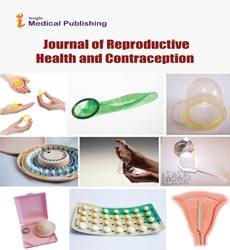Stat Proteins Regulates Cytokine of Mammary Gland and Epithelial Cell Activities in Different Ways
Vinam Park
Vinam Park*
Obstetrics and Gynaecology, Ohio State University, Columbia
- *Corresponding Author:
- Vinam Park
Obstetrics and Gynaecology
Ohio State University, Columbia
E-mail: vinpark@purdue.edu
Received Date: October 08, 2021; Accepted Date: October 22, 2021; Published Date: October 29,2021
Citation: Park V (2021) Stat Proteins Regulates Cytokine of Mammary Gland and Epithelial Cell Activities in Different Ways. J Contracept Stud Vol 6 No.2:9.
The Janus kinases and signal transducers and activators of transcription signalling pathway has emerged as an important cellular communication pathway from the plasma membrane to the nucleus. The route is one of the signal transduction molecular processes that converts the interaction of extracellular ligands, primarily cytokines, with cellular surface receptors into changes in transcription patterns. Different structural families of cytokines recognise different trans membrane receptors, and the Jak-Stat pathway has been identified to be used by a wide variety of different ligand molecules. They are crucial in the regulation of cell growth.
The following cytokines bind to a specific class of receptors and rely on Jak-Stat signalling for their intracellular functions: but also interferon’s, interleukins, and colony-stimulating factors erythropoietin, thrombopoietin, growth hormone, prolactin, and other similar hormones leptin. The Stat protein family has seven members (Stat1, Stat2, Stat3, Stat4, Stat5, Stat6, Stat7, Stat8, Stat9, Stat10, Stat11 2, 3, 4, 5a, 5b, and 6) with domain topologies and lengths that are similar between 750 and 850 amino acids They are made up of an amino terminal tetramerization domain, a coiled-coil, and a central domain. A DNA-binding domain (DBD), a linker domain, and an SH2-like domain transactivation domain, as well as a carboxyl terminal transactivation domain. The TAD is a term that refers to a establishes tissue and cell. The phosphorylation of a tyrosine residue situated between the SH2- and TAD-domains activates Stats. Receptor linked Janus family kinases (Jak), receptor tyrosine kinases, such as EGFR, or cytoplasmic tyrosine kinases, such as Src, are examples of activating kinases. By reciprocal contact of their SH2 and tyrosine phosphorylated domains, Stat proteins create transactivating dimers of parallel shape. This conformation exposes a nuclear localization signal (NLS) within Stat dimers' DBD, allowing them to bind to importing-a and translocate into the nucleus. They bind to GAS-motifs in the presence of gamma interferon.
In lymphocyte development, stats play an important but nonredundant role. They have an impact on the cell fate decisions of developing naive T cells, govern the strength and duration of inflammatory responses, and contribute to chronic inflammatory disease pathogenic pathways. Stat3 controls whether naive T cells differentiate into regulatory (Treg) or inflammatory (Th17) T cell lineages. It also has a role in the development of chronic inflammatory disorders, as well as malignant and neurodegenerative diseases, by regulating cell proliferation, apoptosis, and the transcription of inflammatory genes. Stat1, Stat3, and S functions are required for Th1, Th2, Th17, and Trig cell development. These cells have a differentiated phenotype. Stat3 is important in Th17 cell differentiation. These cells generate IL17 and help the body fight germs and fungus, but they also play a role in autoimmune disorders. Stat3 is activated by IL-1, TGF b 1, IL-6, IL-21, and IL-23, which all stimulate the production of IL-17. All lymphoid lineages, including thyme and peripheral T cells, B cells, and NK cells, are affected by Stat5 activation. The activity of the protein Sta3 is necessary for the development of human T follicular helper cells. These cells send out the signals that cause B cells to differentiate into memory and Ab-secreting cells. Twist1 is a transcription factor that inhibits T-cell proliferation.
Open Access Journals
- Aquaculture & Veterinary Science
- Chemistry & Chemical Sciences
- Clinical Sciences
- Engineering
- General Science
- Genetics & Molecular Biology
- Health Care & Nursing
- Immunology & Microbiology
- Materials Science
- Mathematics & Physics
- Medical Sciences
- Neurology & Psychiatry
- Oncology & Cancer Science
- Pharmaceutical Sciences
